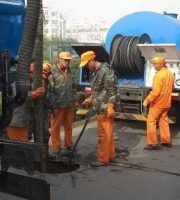After the construction of the waterproof layer is completed, the water closing or drenching test shall be carried out, and the supervisor of Party A shall be applied for inspection.
3.4 the concrete and mortar coagulated on the floor shall be cleaned and loosened by the special “roughening machine” for the floor; Clean the floor.
After the on-site review and signature of the quality inspector, the cracks shall be treated according to the scheme.
“Ash cake” shall be pasted on both sides of the indoor aisle.
3.6 according to the 1m control line of the wall structure and the design thickness of the overall surface course, Daba shall determine the unified height of the building floor on the same floor from the 1m control line downward, and ensure that the surface course thickness is within the allowable deviation range of the specification (Note: if the same floor cannot be unified, it shall be ensured that the unified room shall be unified in height).
200 mm wide and 1.5 mm thick polymer cement (JS II) waterproof coating shall be applied around the pipeline, pipe well and flue in three times with a flashing height of 200 mm; 2.
Generally, the residual water on the floor base course shall be wetted two days after the water is turned off, and it is appropriate that it can be used to stir the cement slurry bonding layer, with a general depth of 5 ~ 10mm.
The living balcony shall be fully coated with 1.5mm thick polymer cement (JS Ⅱ) waterproof coating, which shall be painted in three times, and the flashing height shall be 100mm above the finished decoration surface.
Where there is a height difference (kitchen, bathroom, balcony, etc.) and where the practices are inconsistent, 1:2 cement stone chips shall be used as anti sill closing in advance to facilitate the water closing and wetting of the floor base course.
The balcony and terrace shall be pasted with “ash cake” according to the design slope and slope to the floor drain.
After treatment, report to the project quality inspector for inspection again.
After the crack treatment is completed, turn off the water again and the structural plate can enter the next process only if there is no leakage.
Special reminder: before the construction of the overall surface layer of the floor, the reserved wire pipes for electrical installation shall be drained and blocked in an all-round way to avoid secondary drainage and blocking after the ground construction and damage to the finished products.
Technical disclosure of all light concrete floor construction, don’t you want to know? 1.
Inspection and control of raw materials 1.1 technical requirements for all lightweight concrete 1.2 raw materials and mix proportion according to the design requirements, trial mix KH all lightweight concrete to determine the content of light coarse aggregate, light fine aggregate, powder, water and additives; Metering packaging; Dry storage, not in contact with the ground; Mix proportion measurement board shall be posted on the mixing site (refer to masonry mortar mix proportion board for format); The forced mixer shall be used to mix evenly on site in strict accordance with the mix proportion requirements; 1.3 document management of raw materials before mobilization, the construction unit shall provide factory certificates, formal inspection reports, filing certificates and other relevant documents related to energy-saving acceptance of all materials; In process re inspection report 2 Construction process of full light concrete floor construction process of full light concrete construction process construction of drainage riser root, floor drain waterproof and kitchen and bathroom waterproof layer → qualified water sprinkling test → base course cleaning and roughening → elevation leveling, reinforcement and plastering cake → turn off water to wet the base course two days in advance → floor crack inspection Marking → crack treatment → wetting base course and base course treatment → paving full light concrete → scraping bar leveling and first leveling → rolling and slurry extraction and second leveling → surface roughening treatment → curing → joint cutting → acceptance 3 Preparations before construction 3.1 pipe installation, support and repair the suspended section steel embedded in the floor, and cut off with reinforcement anchor ring; For water supply and drainage installation in the sun, terrace and other parts, the pipe opening shall be supported in place, and the root of kitchen flue and toilet exhaust duct shall be supported in place.
3.3 local waterproof water supply and drainage installation, pipe root and floor drain local waterproof treatment in place; 1.
The thickness of the inverted sill shall be constructed in combination with the 1m line of the floor structure, and the elevation of its upper opening shall be consistent with the elevation of the finished surface of the floor..
Due to the thermal insulation and energy saving requirements of the floor, the thickness of the thermal insulation layer shall meet the design requirements, and the ultra thick position of the structural plate shall be scratched.
The team shall stick “ash cake” (50 * 50 square cement mortar) (commonly known as “Daba”) according to the control height of the building floor; Before pasting the “ash cake”, the clear height of the floor shall be checked.
The water closing depth shall be determined according to the air temperature.
The site shall provide 1m line down (the specific data of floor bar shall be provided by the chief foreman of each building) at the corner of the wall, and the spacing between gray bars in the middle shall not be greater than 2m; The oblique spacing shall not be greater than 2500mm to ensure that the 2500mm long ruler can be put on the two “ash cakes” when the surface is leveled.
3.2 the embedded electrical line pipe shall be installed in the pipeline drainage and blocking structure board, and the drainage and blocking shall be completed, and the slotted part shall be repaired with fine aggregate concrete of the same grade.
The inspection application data shall be recorded and filed within 3 days; The project department shall complete the quality identification of all plate cracks and issue a written report before completion filing.
The plastered wall shall not be scratched by scratching; 3.5 plate crack inspection before the construction of the overall surface course, the water shall be turned off (or sprinkled) for wetting two days in advance.
If the error of structural construction cannot be remedied during floor pouring, the overall surface course of the floor shall be constructed after the floor or ceiling is treated.
The water shall not be too much.
Requirements for support and patching: the periphery of the casing shall be roughened and cleaned, the formwork shall be supported, the interface shall be painted with slurry, and the concrete shall be poured and tamped (2 / 3 of the height shall be poured for the first time, the water storage and curing inspection shall be conducted, and the second concrete shall be poured without drip leakage).
Special inspection must be reported to the project quality inspector, and the location, shape and length of floor cracks must be recorded in the attached drawings of the contract.
The linear crack shall be grooved 20mm deep and 20 ~ 30mm wide along the crack, washed with clean water, and painted with epoxy resin mortar to fill the crack groove after drying.



